bonai@tilefrp.com
Why Choose Polycarbonate Alveolar Plate for Greenhouses?
Choosing polycarbonate alveolar plates for greenhouses offers several advantages due to their unique properties. Here’s a detailed explanation of why these plates are an excellent choice for greenhouse construction:
1. Superior Light Transmission:
Polycarbonate alveolar plates provide excellent light transmission, which is crucial for plant growth. They allow up to 85% of natural light to pass through while diffusing it evenly. This diffusion helps prevent hotspots and ensures that light reaches all parts of the greenhouse uniformly, promoting healthy and consistent plant growth.
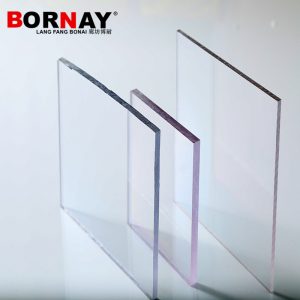
2. Excellent Thermal Insulation:
The multi-wall structure of Policarbonato alveolar plates creates air pockets between the layers, which act as insulation. This thermal insulation helps to maintain a stable temperature inside the greenhouse, reducing the need for artificial heating and cooling. Stable temperatures are essential for optimal plant growth and can significantly reduce energy costs.
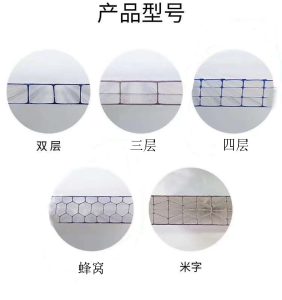
3. High Impact Resistance:
Polycarbonate is known for its toughness and impact resistance. Alveolar plates can withstand impacts from hail, debris, and accidental bumps, which are common hazards in greenhouse environments. This durability ensures that the greenhouse structure remains intact and safe for both plants and people.
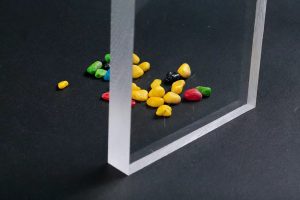
4. Lightweight and Easy to Handle:
Despite their strength, polycarbonate alveolar plates are lightweight, making them easy to handle, transport, and install. This can simplify the construction process and reduce labor costs. Additionally, their lightweight nature puts less stress on the greenhouse frame, potentially extending its lifespan.
POLYCARBONATE CORRUGATED SHEET
[caption id="attachment_1717" align="alignnone" width="206"]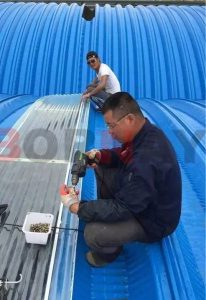 calaminas plasticas[/caption]
calaminas plasticas[/caption]
5. UV Protection:
Many polycarbonate alveolar plates come with a UV protective coating. This coating blocks harmful UV rays, preventing them from penetrating the greenhouse and damaging the plants. It also protects the polycarbonate material from becoming yellow and brittle over time due to UV exposure, ensuring long-term clarity and performance.
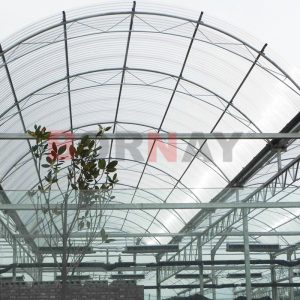
6. Weather Resistance:
Polycarbonate alveolar plates can withstand various weather conditions, including heavy snow, strong winds, and extreme temperatures. Their resistance to weathering ensures that the greenhouse can provide a stable environment for plants year-round, regardless of external conditions.
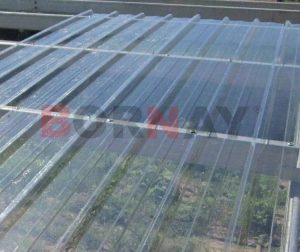
7. Cost-Effective:
While the initial investment in polycarbonate alveolar plates may be higher than some other materials, their durability, energy efficiency, and low maintenance requirements can result in significant cost savings over time. The reduction in heating and cooling costs alone can justify the investment.
[caption id="attachment_1770" align="alignnone" width="300"]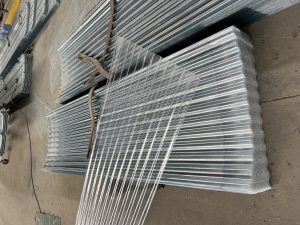 techito calaminas plasticas[/caption]
techito calaminas plasticas[/caption]
8. Flexibility and Customization:
Polycarbonate alveolar plates can be easily cut and shaped to fit custom designs. This flexibility allows for the construction of greenhouses in various shapes and sizes, accommodating different planting layouts and architectural preferences.
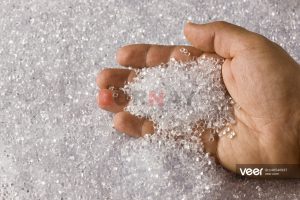
9. Fire Resistance:
Polycarbonate alveolar plates have good fire resistance properties and can meet various fire safety standards. This makes them a safer option compared to some other plastic materials, contributing to overall greenhouse safety.

10. Environmentally Friendly:
Polycarbonate is a recyclable material, and the energy efficiency gained from using polycarbonate alveolar plates contributes to a reduction in greenhouse gas emissions. This makes them a more sustainable choice for environmentally conscious growers.
Tablero hueco de PC
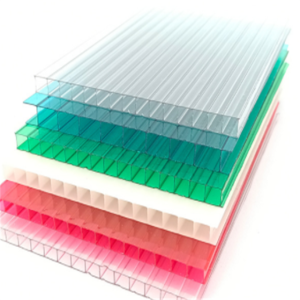
In conclusion, polycarbonate alveolar plates are an excellent choice for greenhouse construction due to their superior light transmission, thermal insulation, impact resistance, lightweight nature, UV protection, weather resistance, cost-effectiveness, flexibility, fire resistance, and environmental benefits. These properties ensure that greenhouses constructed with polycarbonate alveolar plates provide optimal growing conditions, durability, and efficiency, making them a preferred choice for both commercial and hobbyist greenhouse projects.


